Bolsover
Explore hidden histories, historic photos, and things you never knew about Bolsover from the collections and archives of Historic England.
Discover your local listed buildings and places
Introducing some of Bolsover's most historic sites, included in the National Heritage List for England. Some of these captions have been summarised by AI. Click through for the official List entry. Skip this section and go to place by numbers
Hardwick Hall
Ault Hucknall
Hardwick Hall is a National Trust-owned country house, designed by Robert Smythson for Bess of Hardwick between 1590-1597.
Hardwick Hall
Ault Hucknall
Hardwick Hall, designed by Robert Smythson in the 1590s, was bought by Bess of Hardwick in 1583. It's an Elizabethan architectural triumph now owned by the National Trust.
Bolsover Castle: eleventh century motte and bailey castle…
Old Bolsover
Bolsover Castle, an 11th-century motte and bailey, evolved into a significant tower keep castle, later transformed into a 17th-century country house, highlighting its architectural and...
Whitwell Hall
Whitwell
Whitwell Hall, former Manners family seat, features 17th to early 19th-century architecture, with sandstone structures, distinctive mullioned windows, and historically significant interior...
Barlborough Hall
Barlborough
Barlborough Hall, built in 1583-4 by Francis Rodes, is noted for its striking design and historical significance, with subsequent alterations and serving as a school since 1938.
Bolsover Castle
Old Bolsover
Bolsover Castle, built by William Peverel in the 12th century, became significant for entertainment under Charles Cavendish, showcasing Elizabethan and Jacobean architectural styles and...
Hardwick Old Hall: an Elizabethan great house
Ault Hucknall
Hardwick Old Hall, an Elizabethan great house, features unique architectural innovations including a great hall, unusual staircases, and decorative plasterwork by craftsman Abraham Smith.
Stainsby defended manorial complex including site of chapel
Ault Hucknall
Stainsby is a well-preserved manorial complex with unique earthworks, a chapel site, and historical agricultural structures key to understanding medieval life.
Village Cross
Barlborough
The Village Cross in Barlborough, dating from the 14th century and restored in the late 17th or early 18th century, features a distinctive sundial and ornate cross.
Church of St John the Baptist
Clowne
The Church of St John the Baptist features Norman and Gothic elements with C12 origins. Notable for its medieval architecture and restored chancel from 1955.
Standing cross
Barlborough
Standing crosses, erected during medieval times, served various functions like marking boundaries, aiding transactions, or commemorating saints, battles, and customs; now fewer than 2,000...
Hardwick Old Hall
Ault Hucknall
Hardwick Old Hall, managed by the National Trust and English Heritage, features early 16th-century construction.
Church of St Mary and St Lawrence
Old Bolsover
The Church of St Mary and St Lawrence, built in the 13th and 14th centuries, features notable monuments, including those of the Cavendish family, and has undergone restorations.
Pleasley Colliery
Pleasley
Pleasley Colliery is a rare surviving example of 19th-century pithead complex arrangements with twin cylinder steam engines, notable for its historical links to the Nightingale family.
War Memorial
Pinxton
War memorial. Erected c1920 to the memory of the men from the parish of Pinxton who were killed in the First World War.
Ault Hucknall War Memorial
Ault Hucknall
First World War memorial, 1920, with later additions for the Second World War.
Range of Outbuildings and Stables, and Walls Enclosing A …
Ault Hucknall
The 17th and 19th-century sandstone buildings form the south side of a courtyard, featuring a mix of architectural styles, including mullioned windows and a clock turret.
Church of St Leonard
Scarcliffe
The Church of St Leonard in Scarcliffe is a Grade II* parish church with elements from the 12th to 19th centuries, featuring notable architecture and historical artifacts.
Explore more
Search for more listed placesBolsover through time
This timeline shows the first period of use for buildings and places on the National Heritage List for England, just one of the details recorded for every list entry. Click around to see how Bolsover changes over time. Skip this section and go to aerial photos
Prehistoric Before AD 43
Prehistory covers a million years of human occupation before the Roman invasion, from hunter-gatherers of several human species, including Neanderthals, to more recent herders and farmers. It was a time of developing technologies and belief systems, involving contact with and migration from Europe, all reflected in the variety of artefact and monument types characteristic of particular prehistoric periods.
We don't have an image for any of these list entries yet
Medieval AD 1066 to AD 1540
This period, sometimes known as the Middle Ages, began with the Norman invasion in AD 1066. It saw a significant rise in military and defensive buildings such as castles and earthworks, as well as religious houses dominating a largely agricultural landscape.
The monarchy and Church dominated the period, which also saw the break with the Roman Catholic Church and the English reformation.
Post medieval AD 1540 to AD 1901
The Post-Medieval period brought seismic changes to life in England, with religious reformation leading to the democratization of worship and the destruction of hundreds of religious houses.
In parallel, there was a huge expansion of scientific study and enlightenment that permanently altered the nation's social structure and landscape. Industrialization and mass production lead to wider global trade, emigration, and immigration.
20th century AD 1901 to AD 2000
The 20th century saw an incredible expansion of England's transport networks, with suburban growth shadowing rapid infrastructural expansion. The establishment of state schools, hospitals, and modern technical colleges, with new architectural styles, radically changed the appearance of towns and cities.
Two catastrophic world wars and the 1918 pandemic also brought unprecedented change, altering England's built environment and social structures forever.
Prehistoric Before AD 43
Prehistory covers a million years of human occupation before the Roman invasion, from hunter-gatherers of several human species, including Neanderthals, to more recent herders and farmers. It was a time of developing technologies and belief systems, involving contact with and migration from Europe, all reflected in the variety of artefact and monument types characteristic of particular prehistoric periods.
We don't have an image for any of these list entries yet
Medieval AD 1066 to AD 1540
This period, sometimes known as the Middle Ages, began with the Norman invasion in AD 1066. It saw a significant rise in military and defensive buildings such as castles and earthworks, as well as religious houses dominating a largely agricultural landscape.
The monarchy and Church dominated the period, which also saw the break with the Roman Catholic Church and the English reformation.
Post medieval AD 1540 to AD 1901
The Post-Medieval period brought seismic changes to life in England, with religious reformation leading to the democratization of worship and the destruction of hundreds of religious houses.
In parallel, there was a huge expansion of scientific study and enlightenment that permanently altered the nation's social structure and landscape. Industrialization and mass production lead to wider global trade, emigration, and immigration.
20th century AD 1901 to AD 2000
The 20th century saw an incredible expansion of England's transport networks, with suburban growth shadowing rapid infrastructural expansion. The establishment of state schools, hospitals, and modern technical colleges, with new architectural styles, radically changed the appearance of towns and cities.
Two catastrophic world wars and the 1918 pandemic also brought unprecedented change, altering England's built environment and social structures forever.
Aerial photos of Bolsover
Aerial photography helps reveal secrets of England's changing landscapes that are impossible to see from the ground. Skip this section and go to archive images

South Normanton
Fordbridge Meadow Opencast Coal Site, South Normanton, 1948
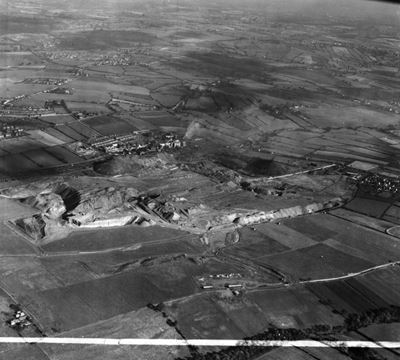
South Normanton
Fordbridge Meadow Opencast Coal Site, South Normanton, 1948

Bolsover
The Coalite and Chemical Products Ltd Coal Byproduct Works and Smokeless Fuel Works, Bolsover, 1952
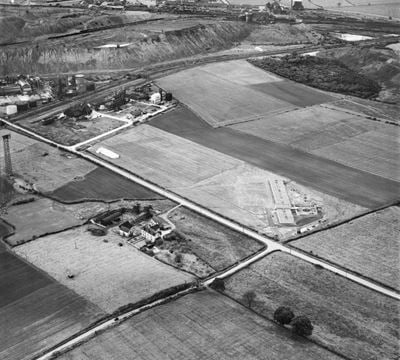
Bolsover
The Coalite and Chemical Products Ltd office block under construction on Buttermilk Lane, Bolsover, 1952
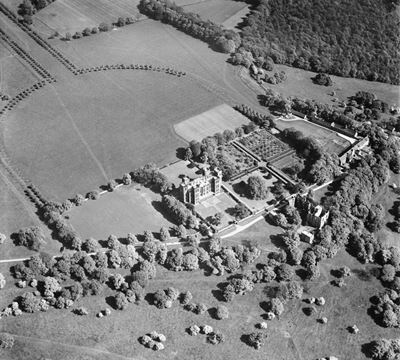
Hardwick Park
Hardwick Hall, Hardwick Park, 1952

South Normanton
Fordbridge Meadow Opencast Coal Site, South Normanton, 1948

South Normanton
Fordbridge Meadow Opencast Coal Site (site of), South Normanton, 1948
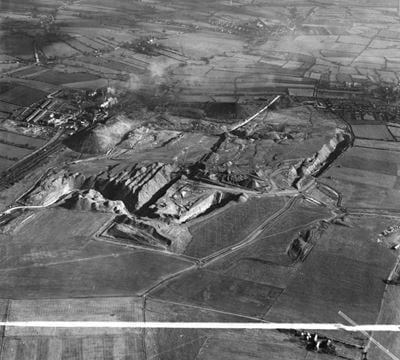
South Normanton
Fordbridge Meadow Opencast Coal Site, South Normanton, 1948

South Normanton
Fordbridge Meadow Opencast Coal Site, South Normanton, 1948
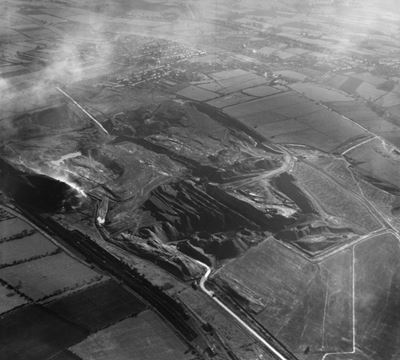
South Normanton
Fordbridge Meadow Opencast Coal Site, South Normanton, 1948
Bolsover in the Historic England Archive
The Historic England Archive cares for over 15 million images, dating from the 1850s to the present day. Discover stunning images of Bolsover's past. Skip this section and go to stories about heritage
John Gay Collection: Counties
Hardwick Park, Bolsover, Derbyshire
Date created: 1975
Two of the six lead statues within the gardens of Hardwick Hall, said to represent Bacchus and Salome.
John Laing Collection
Shirebrook, Bolsover, Derbyshire
Date created: Jul 1988
The exterior of the Co-op supermarket in Shirebrook
London, Midland and Scottish Railway Company
Hardwick Park, Bolsover, Derbyshire
Date created: 20 Aug 1891
The ruins of Hardwick Old Hall viewed from the north-east
John Gay Collection: Counties
Pleasley Vale, Bolsover, Derbyshire
Date created: 1950s
The east entrance lodge at Pleasley Vale with the fish-scale roof of the west lodge visible in the foreground
London, Midland and Scottish Railway Company
Hardwick Park, Bolsover, Derbyshire
Date created: 20 Aug 1891
The south front of the ruined Hardwick Old Hall
John Gay Collection: Counties
Hardwick Park, Bolsover, Derbyshire
Date created: 1975
View over a brick wall and past a silhouetted tree, towards the north facade of Hardwick Hall.
London, Midland and Scottish Railway Company
Hardwick Park, Bolsover, Derbyshire
Date created: 20 Aug 1891
A view looking south across the east side of Hardwick Old Hall, with the two-storey lodge in the foreground
John Gay Collection: Counties
Hardwick Park, Bolsover, Derbyshire
Date created: 1975
The grand east façade of Hardwick Hall, as seen over a topiary hedge and through a snow flurry.
London, Midland and Scottish Railway Company
Hardwick Park, Bolsover, Derbyshire
Date created: 20 Aug 1891
The west elevation of Hardwick Hall
John Gay Collection: Counties
Hardwick Park, Bolsover, Derbyshire
Date created: 1975
The grand east façade of Hardwick Hall, as seen over a topiary hedge and through a snow flurry.
London, Midland and Scottish Railway Company
Bolsover, Derbyshire
Date created: 23 Apr 1896
The grand entrance on the north-east front of the ruined Terrace Range at Bolsover Castle
John Gay Collection: Counties
Hardwick Park, Bolsover, Derbyshire
Date created: 1975
The grand east façade of Hardwick Hall, as seen over a topiary hedge and through a snow flurry.
Stories about heritage in your local area
Historic England publishes news, blogs, research, videos, and podcasts celebrating England's rich heritage. Discover the stories we have about Bolsover. Skip this section and go to education
Simulation Models and Energy Efficiency in Historic Buildings
Mentions Bolsover
Article exploring the usefulness of building simulation models for understanding the energy-efficiency performance of historic buildings.
Thermography in Historic Buildings
Mentions Bolsover
Learn how Infrared thermography can provide invaluable information about historic buildings without intrusive investigation.
23 Remarkable Places Listed in 2018
Mentions Bolsover
Historic England publishes its annual highlights from more than 900 buildings and sites listed or upgraded this year.
Bolsover's social history through photos
Over 10,000 images from the Historic England Archive have been specially selected and re-captioned for teachers, students, and anyone who wants to learn more about their local area. Skip this section and go to grant-aided places
Workers housing, New Bolsover Colliery Village, Derbyshire
Period: 1990s (1990 - 1999)
Bolsover Castle overlooks its new neighbour.
Workers housing, New Bolsover Colliery Village, Derbyshire
St John The Baptists Church, Hodmire Lane, Ault Hucknall, Derbyshire
Period: Medieval (Middle Ages) (1066 - 1484)
Detail of the blocked 11th century west doorway at St John the Baptist church in Ault Hucknall. The arch is rounded and typical of the Norman period.
St John The Baptists Church, Hodmire Lane, Ault Hucknall, Derbyshire
Pleasley Colliery, Chesterfield Road, Pleasley, Derbyshire
Period: Victorian (1837 - 1901)
The engine house at the former Pleasley Colliery dates from 1873. Inside were a pair of large steam winding engines.
Pleasley Colliery, Chesterfield Road, Pleasley, Derbyshire
New Bolsover Post Office, Old Bolsover, Derbyshire
Period: Victorian (1837 - 1901)
The Post Office at Bolsover was built 1888-93 as part of the model village that served the nearby mine run by the Bolsover Colliery Company.
New Bolsover Post Office, Old Bolsover, Derbyshire
Tags
Glebe Junior School, Hamlet Lane, South Normanton, Derbyshire
Period: Victorian (1837 - 1901)
This is probably the earliest school designed by George Widdows who was County Architect for Derbyshire in the early years of the 20th century.
Glebe Junior School, Hamlet Lane, South Normanton, Derbyshire
Coalite Works, Bolsover, Derbyshire
Period: 1930s (1930 - 1938)
Coalite was developed as a smokeless fuel to combat the problems caused by 'smog' in many major cities.
Coalite Works, Bolsover, Derbyshire
Chimney at Lime Kiln Fields Mill, Bolsover, Derbyshire
Period: Victorian (1837 - 1901)
An unusual survival of a chimney close to a former windmill that was later converted to steam power. The chimney dates back to the late 19th century.
Chimney at Lime Kiln Fields Mill, Bolsover, Derbyshire
Bolsover Cundy House, Bolsover, Derbyshire
Period: Stuart (1603 - 1713)
This is a 17th century spring fed conduit (well) house. It was part of the water supply to Bolsover Castle.
Bolsover Cundy House, Bolsover, Derbyshire
Discover more
Ready for more local stories? Take a look at these other places nearby
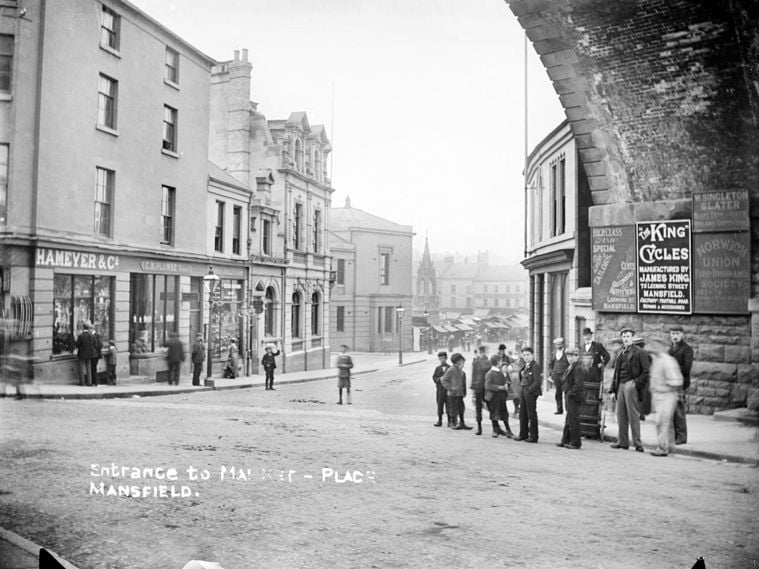
Mansfield
Local Authority District
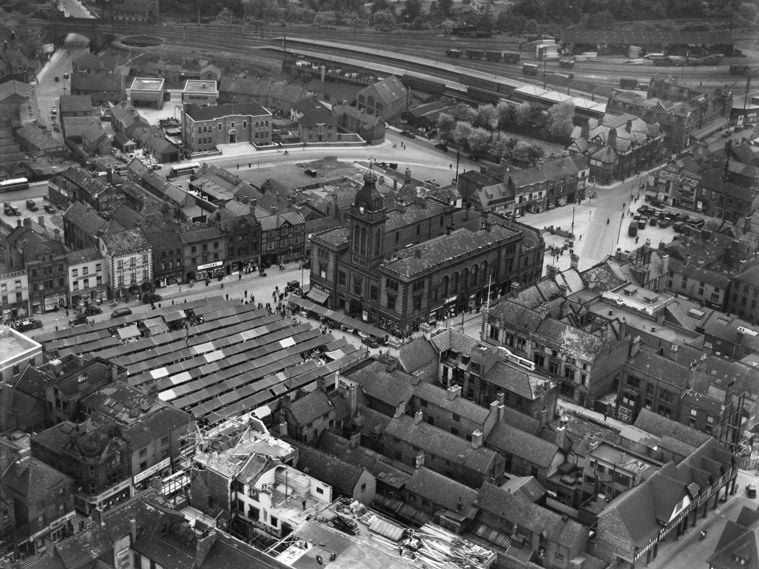
Chesterfield
Local Authority District
North East Derbyshire
Local Authority District